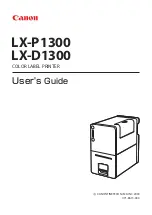
C
HECK
THE
PRINTER
CONNECTIONS
Make sure the cable connections for the following hardware are secure, if applicable:
•
Telephone
•
Handset
•
Answering machine
C
HECK
THE
TELEPHONE
WALL
JACK
1
Plug a telephone into the wall jack.
2
Listen for a dial tone.
3
If you do not hear a dial tone, then plug a different telephone into the wall jack.
4
If you still do not hear a dial tone, then plug a telephone into a different wall jack.
5
If you hear a dial tone, then connect the printer to that wall jack.
R
EVIEW
THIS
DIGITAL
PHONE
SERVICE
CHECKLIST
The fax modem is an analog device. Certain devices can be connected to the printer so that digital telephone
services can be used.
•
If you are using an ISDN telephone service, then connect the printer to an analog telephone port (an R-interface
port) on an ISDN terminal adapter. For more information and to request an R-interface port, contact your ISDN
provider.
•
If you are using DSL, then connect to a DSL filter or router that will support analog use. For more information,
contact your DSL provider.
•
If you are using a PBX telephone service, then make sure you are connecting to an analog connection on the
PBX. If none exists, consider installing an analog telephone line for the fax machine.
C
HECK
FOR
A
DIAL
TONE
•
Place a test call to the telephone number to which you want to send a fax to make sure that it is working
correctly.
•
If the telephone line is being used by another device, then wait until the other device is finished before sending
a fax.
•
If you are using the On Hook Dial feature, then turn up the volume to verify a dial tone.
T
EMPORARILY
DISCONNECT
OTHER
EQUIPMENT
To ensure the printer is working correctly, connect it directly to the telephone line. Disconnect any answering
machines, computers with modems, or telephone line splitters.
C
HECK
FOR
JAMS
Clear any jams, and then make sure that
Ready
appears.
Troubleshooting
266
















































